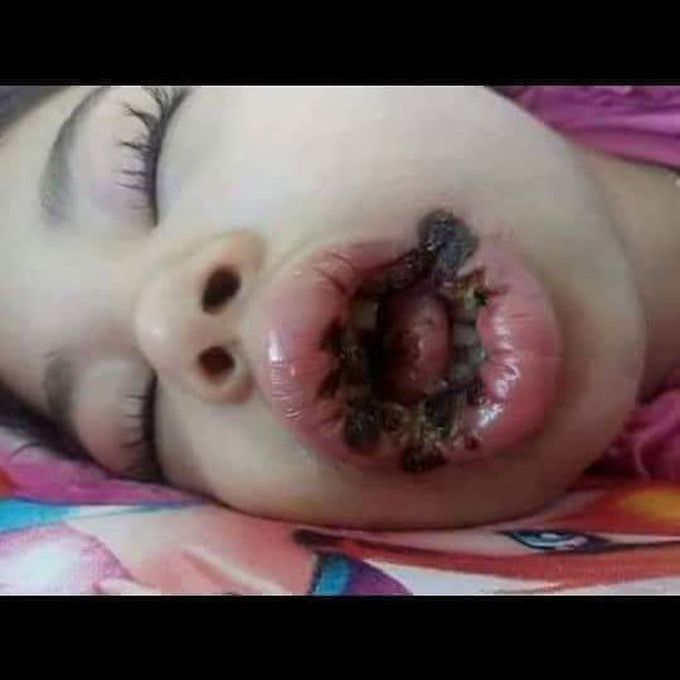


Stevens–Johnson syndrome
Stevens–Johnson syndrome (SJS) is a type of severe skin reaction. Together with toxic epidermal necrolysis (TEN) and Stevens-Johnson/toxic epidermal necrolysis(SJS/TEN), it forms a spectrum of disease, with SJS being less severe. Early symptoms of SJS include fever and flu-like symptoms. A few days later the skin begins to blister and peel forming painful raw areas. Mucous membranes, such as the mouth, are also typically involved.[2]Complications include dehydration, sepsis, pneumonia, and multiple organ failure. The most common cause is certain medications such as lamotrigine, carbamazepine, allopurinol, sulfonamide antibiotics, and nevirapine. Other causes can include infections such as Mycoplasma pneumoniae and cytomegalovirus or the cause may remain unknown.Risk factors include HIV/AIDS and systemic lupus erythematosus. The diagnosis is based on involvement of less than 10% of the skin. It is known as TEN when more than 30% of the skin is involved and an intermediate form with 10 to 30% involvement. SJS/TEN reactions are believed to follow a type IV hypersensitivitymechanism. It is also included with drug reaction with eosinophilia and systemic symptoms (DRESS syndrome), acute generalized exanthematous pustulosis(AGEP), and toxic epidermal necrolysis in a group of conditions known severe cutaneous adverse reactions (SCARs). Erythema multiforme (EM) is generally considered a separate condition. @medicalcortex
Living with Lupus is often a battle not just against the illness itself, but also against the emotional weight of uncertainty, fatigue, and the toll of long-term medications. For one courageous woman, that battle began in 2013. Diagnosed after Lupus had already affected her joints and internal organs, she was quickly placed on medication that initially helped. But as time went on, her health declined again this time with more frequent flare-ups and increasingly difficult side effects. Like many others with chronic illness, she faced the crushing weight of hopelessness. Each day became harder than the last, and conventional treatments no longer offered the comfort they once did. But in March 2020, at her lowest point, she made a decision that changed everything.Out of desperation and with a healthy dose of skepticism she turned to NaturePath Herbal Clinic, hoping their natural Lupus treatment might offer at least some relief. What happened next went far beyond her expectations.After completing a six-month herbal program, her flare-ups stopped entirely. Her energy returned. The chronic pain that had defined her daily life began to fade. For the first time in years, she felt like herself again. Not just alive but truly living.Her story is not just one of healing; it’s one of resilience, open-mindedness, and the courage to try something new when all else fails. By sharing her journey, she hopes to offer something priceless to others living with Lupus: hope.This treatment has been a true breakthrough for her. If you’re searching for a safe, natural, and effective alternative, I genuinely recommend giving this a chance.”www.naturepathherbalclinic.com or email them at info@naturepathherbalclinic.com


